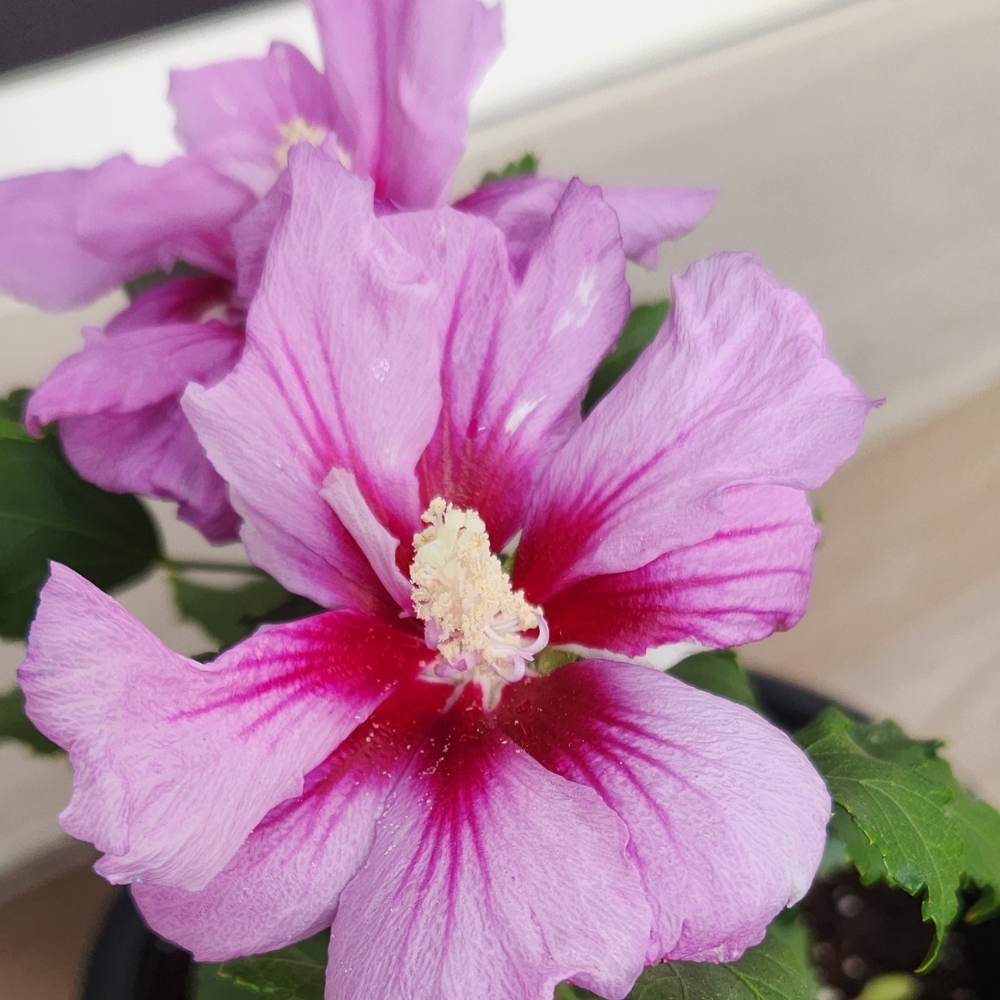We ship nationwide. Free standard shipping on orders over AED 150.
Hibiscus Syriacus
![]() Sorry, this item is sold out
Sorry, this item is sold out
38 AED Ex VAT
The Delivered Plant May Differ in Size, Color, Number of Flowers, Branches, and Will Come in a Plastic Pot, not The One Shown in The Picture.
HIBISCUS SYRIACUS PLANT GROWING GUIDE
 |
Ideally, Hibiscus syriacus lives in temperatures between 65 and 80°F (18 and 27°C). |
 |
Hibiscus syriacus prefers at least 6 to 8 hours of direct sunlight for optimal growth. |
 |
Hibiscus syriacus plant needs moderate to high humidity, ideally around 50-60%. |
 |
Water your plants regularly and keep the soil moist, especially in the summer season. |
ADDITIONAL CARE FOR HIBISCUS SYRIACUS PLANT
Hibiscus syriacus, also known as the Rose of Sharon, is a lovely evergreen shrub that would look lovely in your landscape. Here are some additional care tips for this plant:
Pruning
Regular pruning will help shape the plant and promote additional flowers. In late winter or early spring, prune the shrub to eliminate dead or weak growth and shape it. Prune carefully to keep the shrub’s desired shape and size. You can also remove dead wood to promote fresh growth and flowers.
Fertilizing
In early spring, just as new growth begins, feed your Hibiscus syriacus with a balanced, slow-release fertilizer. Overfertilization should be avoided since extra nutrients can result in fewer blooms.
Watering
Water regularly, especially during dry seasons. Keep the soil continuously wet but not soggy. Mulch around the plant’s base to help preserve soil moisture.
Pest and Disease Control
Monitor for common garden pests, including aphids, spider mites, and Japanese beetles. If you find an infestation, use suitable pest control practices. Additionally, ensure proper ventilation to avoid fungal illnesses such as leaf spots.
Winter Protection
In colder locations, protect your Hibiscus syriacus from frost. Apply a thick layer of mulch around the base of the plant to insulate the roots and protect it from cold winds with burlap or a winter frost cover.
Sunlight
For the finest flowering, give your Rose of Sharon at least 6–8 hours of direct sunlight each day. It can tolerate little shade but blooms more abundantly in full sun.
Soil
Plant your Hibiscus in well-drained soil with a pH range of slightly acidic to neutral. Organic matter can be added to the soil to improve its fertility and drainage.
Support
As the plant matures and produces large flowers, it may require more support to keep the branches from drooping or breaking under the weight of the blooms.
By following these care tips, you can help your Hibiscus syriacus grow and produce beautiful, long-lasting flowers in your garden.
NOTE
An example picture gives a trustworthy image of the plant with good care. The plant in the example picture is not the plant that will be delivered. This is an example, so variations are possible. Eventually, the delivered plant may differ in, for example, size, number of flowers, and branches. The plant will be in a plastic pot, not the one shown in the picture.
| Size | 25cm – 30cm |
|---|
Only logged in customers who have purchased this product may leave a review.








Reviews
There are no reviews yet.